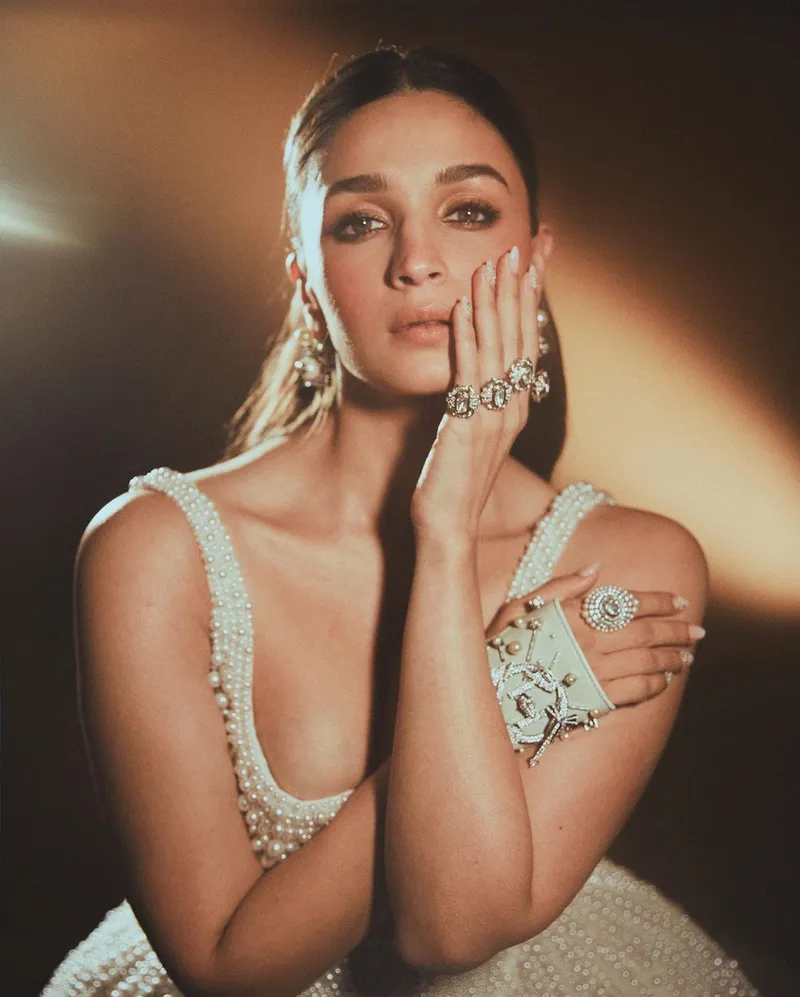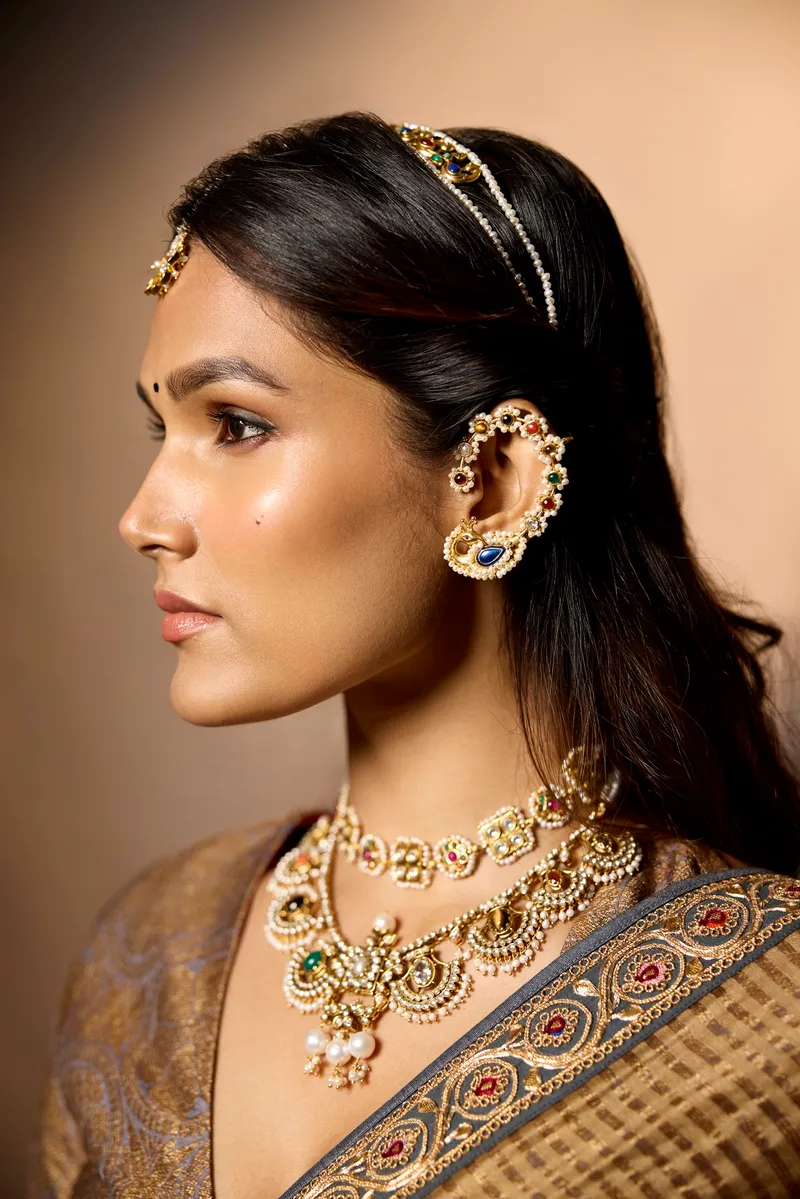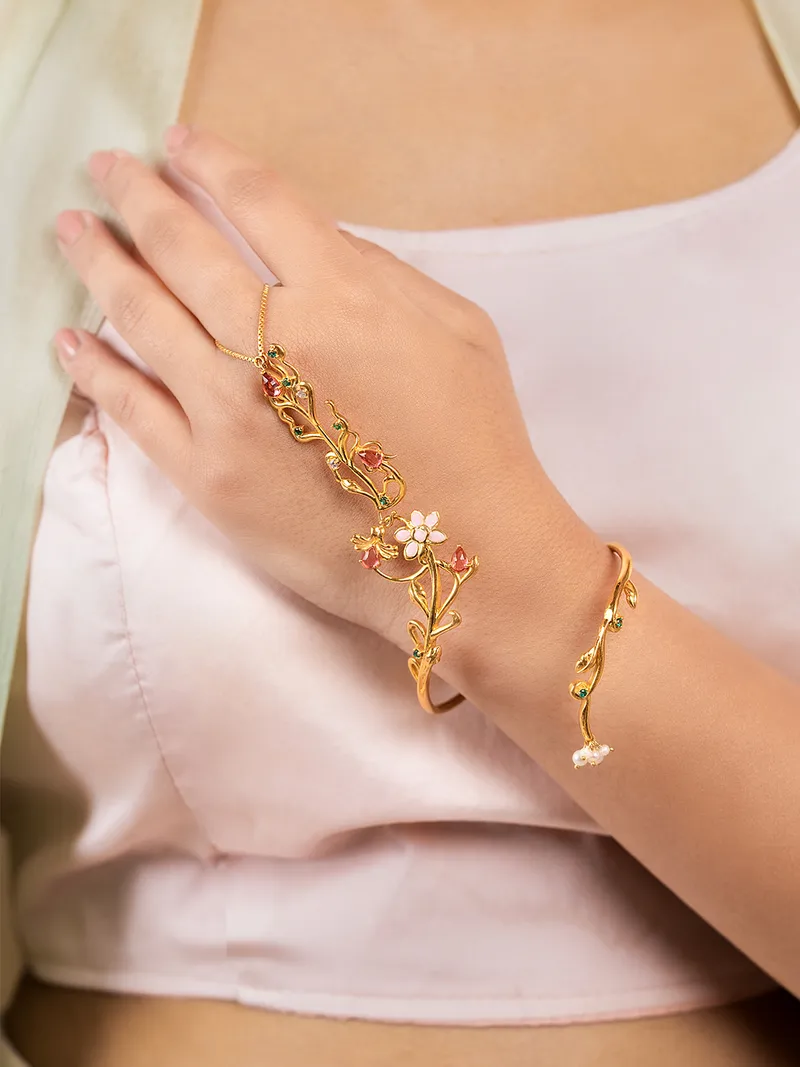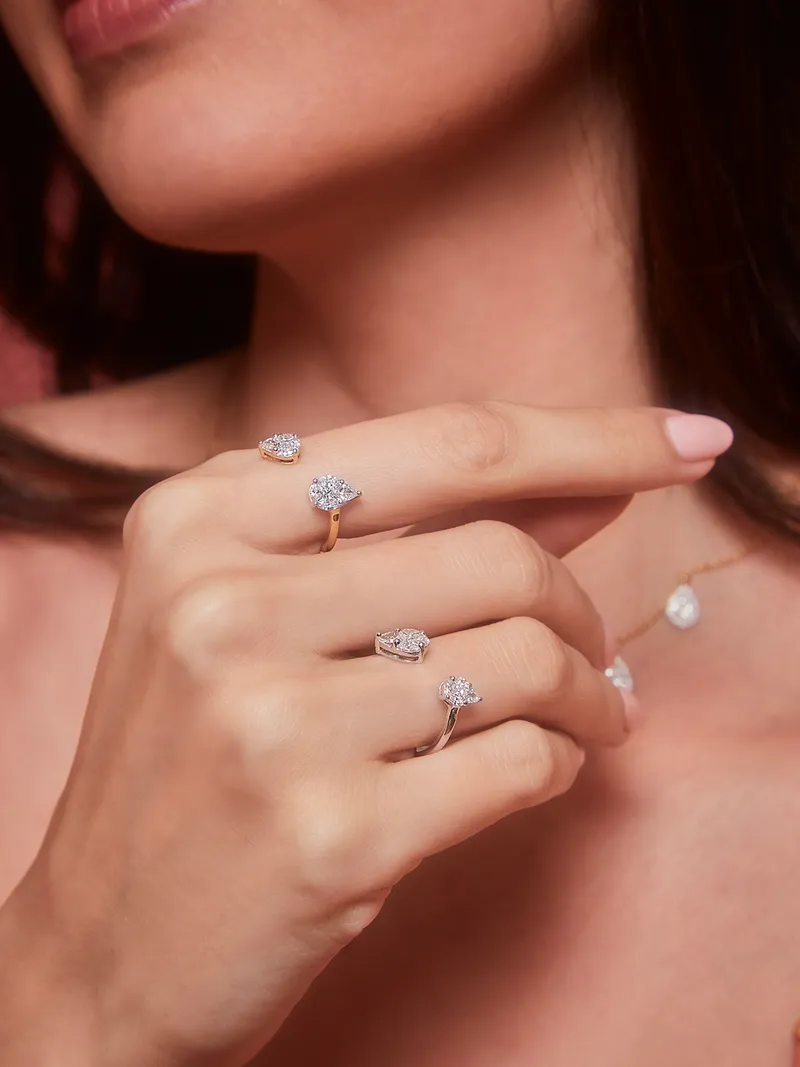All that glitters isn’t gold: Can bridge jewellery ever match fine jewellery’s value?
Young India is obsessed with bridge jewellery, often preferring it over traditional, occasion-wear fine jewellery. But can the former ever count as an investment choice?
For the longest time, fine jewellery has been treated as an asset for its appreciating and emotional value. It symbolises wealth, power, and status.
The Indian gems and jewellery market, pegged at $78.5 billion in FY21, has, however, undergone major changes in the last couple of years. With time, functionality and versatility have overpowered the ‘status symbol’ factor, and modern buyers are now using jewellery as an extension of their personal style and mood.
For Noida-based bridge jewellery brand Outhouse—a sought-after name among Indian and international celebrities—the mission statement is to “design each piece of jewellery as a piece of art, and a conversation starter,” Founders and sisters Kabia and Sasha Grewal tell YS Life.
While there is sentimental value involved, can bridge jewellery ever match fine jewellery’s asset value? YS Life explores.

Actor Alia Bhatt sporting Outhouse Jewellery at MET Gala in New York, last year
Bridging the gap
Bridge jewellery, as the name suggests, is crafted with the same precision and standards as fine jewellery, only they are made with less expensive metals and gems. The trend is catching up with the younger consumers in India, who prefer versatility and convenience over traditional and occasional-wear jewellery.
The last decade has seen a spurt of homegrown jewellery brands trying to crack a sweet spot in the bridge jewellery segment. For instance, Kabia and Sasha founded Outhouse Jewellery in 2012 after they identified the market gap for bridge jewellery. “We did not have anything edgy to wear, and so it flared from there,” Kabia says.

Tribe Amrapali's latest collection, ‘Navratna’
Entrepreneur Sreesha Shetty was one of the trailblazers in the homegrown bridge jewellery space. She launched Shop Lune in 2012, manufacturing exquisite handcrafted brass, sterling silver, and 18K gold jewellery.
Similarly, founded in 2019, D2C brand GIVA Jewellery, actively promoted by brand ambassador Anushka Sharma, offers authentic yet affordable silver jewellery to customers without having to burn a hole in their pocket.
Not just new-age brands, the long-standing traditional jewellery houses have also adapted and evolved to cater to the growing needs of everyday jewellery.
In 2013, Amrapali Jewels launched a sub-brand, Tribe Amrapali, to offer fashion jewellery in precious and non-precious metals, inspired by the rich tribal life and folklore of India.
“While Legend Amrapali (a subsidiary of Amrapali Jewels) focuses on jewellery pieces made with 18K yellow gold, featuring gemstones (amethyst, rainbow moonstone, and diamonds), Tribe Amrapali offers fashion jewellery, aligning with the latest trends while maintaining its unique brand philosophy,” CEO Akanksha Arora explains.
Similarly, after almost a decade of making diamond and gold jewellery, CaratLane—a Tanishq partnership—plunged into the bridge jewellery space with its 925 silver jewellery brand Shaya in 2018. The brand took the decision based on inputs from CaratLane’s customers, many of whom were frequent silver buyers.
“While silver jewellery has always been a favourite, the designs available in the local market were too generic, and there was no guarantee on their authenticity,” says Mimi Hrahsel, Business Head at Shaya by CaratLane. Customers wanted designs that resonated with their personal style, she adds.
Kolkata’s 1994-founded SENCO Gold & Diamonds entered the everyday-wear fine jewellery category with its Everlite sub-brand, targeting modern Indian women between the ages of 18 and 45 years. Starting at Rs 8,000, “Everlite is for customers who appreciate both style and functionality,” says Joita Sen, Director and Head of Marketing and Design at SENCO Gold & Diamonds.
Versatility and affordability
Earlier, customers had a strong preference for larger, more dramatic pieces—bold gold jewellery with prominent gemstones. Over the last three to four years, millennials have shown a preference for investing in versatile, wearable pieces over traditional, heavy jewellery.
“There is a rise in everyday fine jewellery—delicate necklaces, stackable rings, and earrings that can be dressed up or down. People are more conscious of getting the most wear out of their jewellery,” states Shweta Gupta, Founder of Jewels by Shweta (previously Jeypore Creations).
“This shift is driven by the desire for pieces that can be effortlessly styled across various ensembles, providing flexibility and adaptability to different occasions,” Sasha says.

Nakhrewali Aunty bracelet by Shaya can be used as an everday-use bracelet by detaching a part of it
For instance, Shaya by Caratlane’s Shaadi Squad collection features a Nakhrewali Aunty Bracelet, which can be worn as a traditional haath phool during special occasions. But one can detach a part of it and wear it as an everyday-use bracelet.
According to Sasha, budget-friendly options with statement designs not only have a lasting impact but also allow for frequent re-wearing, aligning with their dynamic and fashion-forward lifestyles.
“I prefer bridge jewellery for more eclectic designs and rough usage on a daily basis, without the worry of damaging expensive pieces,” agrees 28-year-old Nisha Singh from Bengaluru, who indulges in both bridge and fine jewellery.
This particular shift of preferences from high-end, occasional-wear jewellery to more affordable, daily-wear bridge jewellery, Arora says, can be attributed to social media. “Social media has changed how often we go out and what we wear…Today, consumers desire to stand out while enjoying events.”
This, in turn, can be connected to the desire for variety and affordability, and a preference for more subtle pieces that are easy to wear and travel with.
Priced between Rs 500 and Rs 1,75,000, Tribe Amrapali uses only silver and alloy metal, along with semi-precious stones, moissanite, and quality crystals. The brand soon plans to introduce 18K gold and zinc metal jewellery.
Moreover, “Price points are an interesting aspect of the jewellery market. While there is still a demand for high-end statement pieces, more people are looking for accessible luxury,” Gupta of Jewels by Shweta suggests.

Duo drop ring by Carat Crush
“In a digital rife with discerning preferences in luxury, we noticed a conspicuous absence of everyday fine jewellery, or as we like to call them—daily diamonds,” say Arpan and Aanchal Mahtani, Co-founders of Mumbai-based Carat Crush, which makes wearable and versatile pieces, starting from Rs 12,000.
In fact, there is a sustainable angle to this trend as well—ethically sourced gemstones offer a sustainable and more affordable alternative to traditional diamonds.
Overall, the shift reflects a more conscious consumer—jewellery that complements their style, fits their budget, and aligns with their values, Gupta adds.
The ‘asset’ factor
Fine jewellery is often seen as a valuable asset, which either holds its worth or increases in value over time. For instance, 24K gold was priced at Rs 28,006.50 (approx) per 10 grams in 2014. Ten years later, it is at Rs 68,475 per 10 grams. However, with “Affordable jewellery, the idea of it being an ‘asset’ is a bit more complicated,” Gupta explains.
“Low-end jewellery can be treated as an asset if customers handpick designs that are evergreen,” suggests Preeti Jain, Founder of Jewels by Preeti. “While they (bridge jewellery) may not appreciate in value, their worth can be subjective to the aesthetic and sentimental value of the wearer,” Kaabia agrees.
Bridge jewellery can certainly hold emotional value, but it is less likely to be treated as a traditional investment asset in the same way as its precious counterparts.
For Riddhi Malick, a Bengaluru-based financial advisor, resale value is more important when making jewellery-buying decisions. But for Singh, design takes the priority. “I buy jewellery that I can wear and get the most value out of as opposed to reselling it,” she says.
Thus, one can say the asset factor of a piece of jewellery is directly related to the consumer’s behaviour—whether they are treating it as a monetary investment or as an emotional purchase.
“Lower-end jewellery is often designed for everyday use and enjoyment. The focus is on appearance and personal expression, not long-term investment. These pieces are meant to be loved and worn, not necessarily passed down as heirlooms,” Gupta concludes.
Disclaimer: Article was updated to make factual changes.
Edited by Suman Singh







